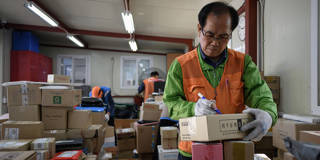Asia’s population is aging rapidly, with significant economic consequences. But by adopting policies that keep older individuals in the workforce and boost their productivity and well-being, the region’s governments can transform the challenges of a graying society into opportunities for lasting prosperity.
SEOUL – Population aging is rapidly becoming one of Asia’s most daunting challenges. In 2023, 14% of the region’s population was aged 60 or above, and that share is projected to swell to 25% by 2050. The proportion of the over-60 population in Japan is already 35.6% and will likely reach 43% by mid-century, while in China it is set to double, to 40%, by then. Though these countries have been graying for some time, even relatively younger ones across Asia are now experiencing sharp demographic shifts.

SEOUL – Population aging is rapidly becoming one of Asia’s most daunting challenges. In 2023, 14% of the region’s population was aged 60 or above, and that share is projected to swell to 25% by 2050. The proportion of the over-60 population in Japan is already 35.6% and will likely reach 43% by mid-century, while in China it is set to double, to 40%, by then. Though these countries have been graying for some time, even relatively younger ones across Asia are now experiencing sharp demographic shifts.